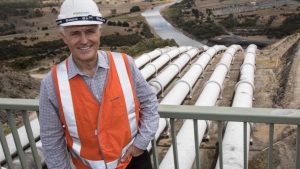The stunning growth trajectory of solar PV has been likened to that of a variety of its technology forbears, the most popular comparison being mobile phones. But at this week’s Disruption and the Energy Industry conference, hosted by RenewEconomy, another interesting analogy was used.
“LCD televisions fell at a cost curve of 20 per cent,” said Tony Sennit, managing director of Melbourne-based clean energy generator and retailer, Diamond Energy. “It only took 18 months for sales of LCD TVs to go from 2 per cent of market to go to 80 per cent of market.”
Sennit’s point was, that when the economics of solar PV get there, “it’s going to happen really quickly.”
“In 2012, solar was pretty expensive,” Sennitt said. Three years later, he adds it is already “so much cheaper than where we are in Australia with coal”, in terms of new-build, utility-scale plants – and he cites the example of the PPA First Solar secured from Nevada-based utility NV Energy, to buy electricity from its 100MW Playa Solar 2 project at 3.87 cents per kWh. Described at the time as, “quite possibly be the lowest electricity rate in the country.”
In light of this, Sennitt says, “nobody’s going to build another coal plant. Why would you? You can’t bank them, you can’t finance them.”
But according to Professor Ray Wills, the managing director of Future Smart Strategies, solar PV is not quite there yet. And he provided the chart below to prove it.

“If we think we’re really in a tech tsunami really and we’re building more panels that consume power (televisions) than we are panels that generate power, we’re not there yet,” Wills told the same conference on Tuesday.
The true measure of when solar PV is as ubiquitous in Australian households as LCD TVs, says Wills, will be when we start seeing solar panels left out on the nature strip, alongside the old flat screen TV, as part of the hard rubbish collection.
The panels will be out there, he says, not because they have stopped working, but because the household has decided to upgrade to the latest, most efficient energy self-generation technology – technology it needs to help power its five flat-screen TVs.







